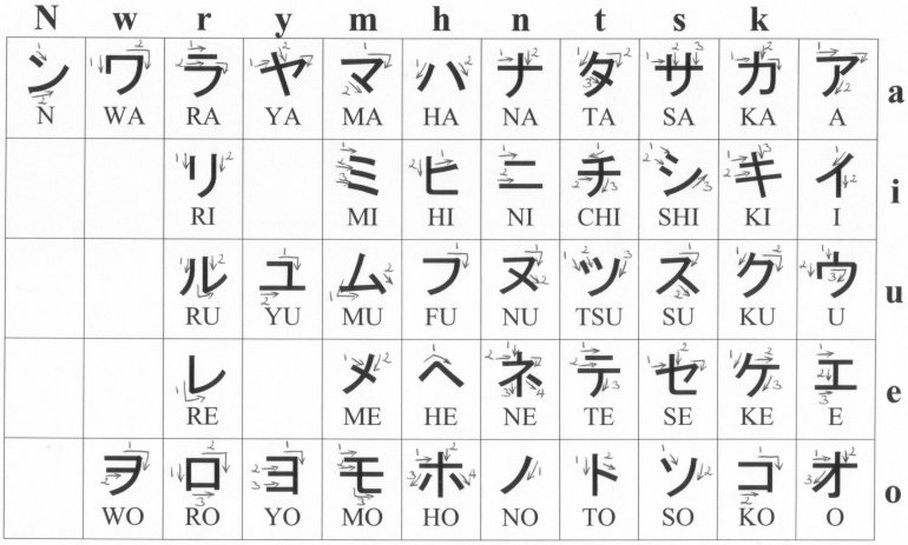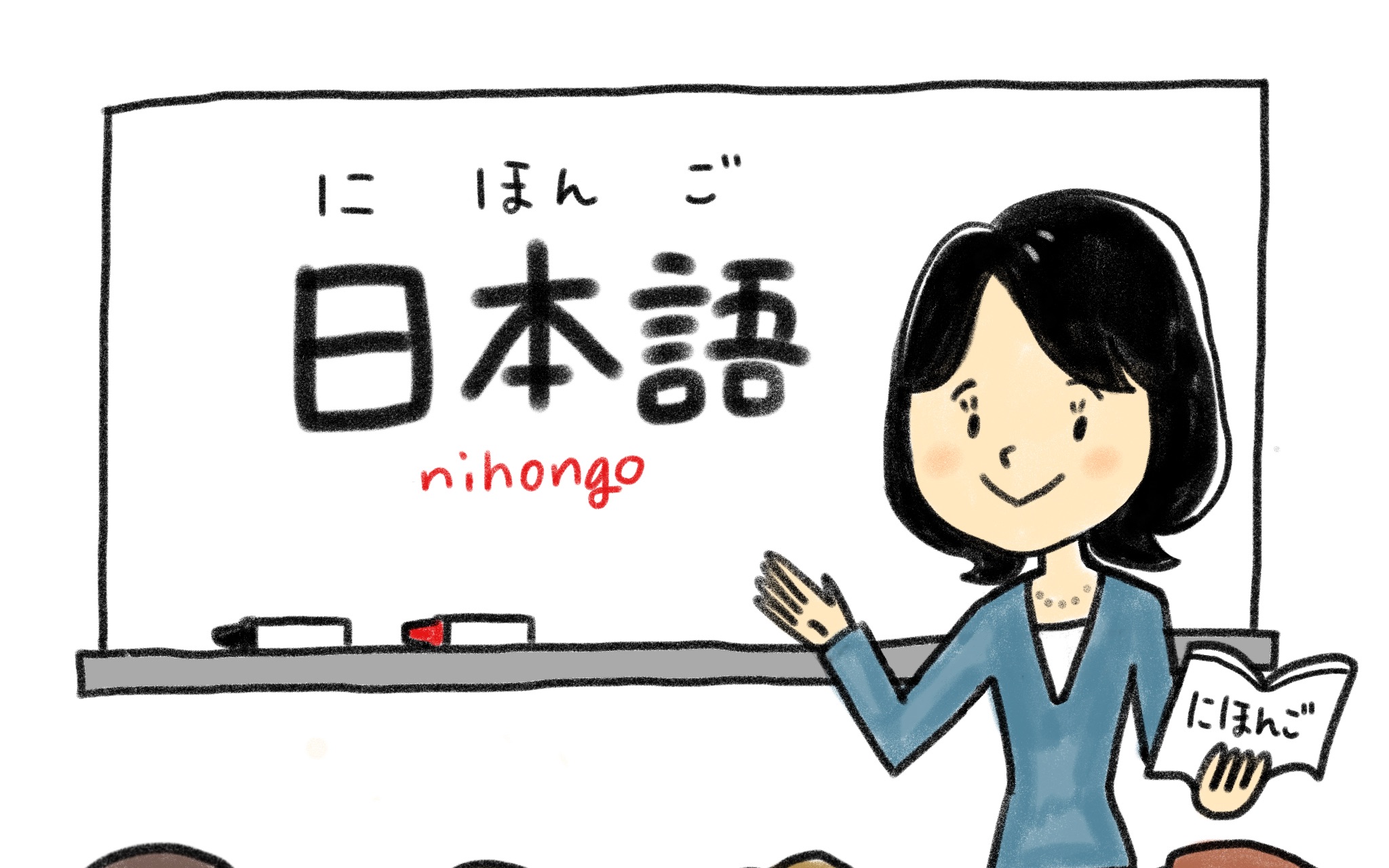Nihongo Benkyou Live Stream YouTube

Pin on Nihongo ga benkyou shite imasu
Part 1: The Most Common Way to Ask Questions The easiest way to ask Japanese questions? Add か (ka) at the end of a phrase. This "ka" is a Japanese particle for questions and can transform almost any phrase into a question. For example… Phrase 1 公園に行きます (Koen ni ikimasu) Meaning: "I go to the park" Add "ka" to turn it into a question 公園に行きます か?

UM NOVO REBOOT Nihongo Benkyou Vlog 007 YouTube
Word: べんきょうします。 Dictionary Form:べんきょうする。 Kanji: 勉強します。 Romaji: benkyoushimasu Romaji (Dictionary Form): べんきょうする。 Meaning: To study, studying This is a pretty common term I usually hear when watching anime that features characters in a school setting.

Katakana (カタカナ) Nihongo Benkyou
Noun 3. experience; lesson (for the future) Noun, Suru verb, Transitive verb, Intransitive verb 4. discount; price reduction Details べんきょうちゅう 勉強中 Common word Links Expressions (phrases, clauses, etc.) 1. while studying; presently studying おとをた音を立てないで 。 べんきょうちゅう勉強中 だから 。 Don't make any noise, I'm studying. Details べんきょうか 勉強家 Links Noun

Nihongo Benkyou Live Stream YouTube
Unlock the beauty of the Japanese language effortlessly! Our app offers a comprehensive learning experience, combining innovative methods and interactive les.

Nihongo Benkyou Belajar bahasa jepang dari awal 2
The particle を is used to indicate the target of a verb, and is therefore called the "object marker". The standard pattern for use is: Noun を Verb. 肉 を 食べる。. niku o taberu. To eat meat. In this example, を is marking the preceding noun (meat) as the subject for the verb (to eat). The romaji version is commonly written as.

Pin by Denise Marie on Nihongo benkyou Learn japanese, Nihongo, Japanese
1. I want to learn Japanese. 日本語が学びたいです。 Nihongo wo manabitai desu. Okay, so if you don't already know, "Nihongo" means Japanese. Then, we have the verb, to learn, which is "manabu." But, in the phrase above, it ends with"tai." So, first thing you should remember right now: -tai is how you express your "wants" in Japanese.

Hiragana (平仮名) Nihongo Benkyou
to ch3570r-san. Bucko said: I'm learning Japanese = nihongo wo naratte imasu. "nihongo wo naratte imasu" is polite expression. If you want to say more easy, "Nihongo Benkyou chuu" or "Nihongo wo Benkyou chuu desu". "XXX shite (or tte) imasu" means "XXX ing" in English. "naratte imasu" or "Benkyou shite imasu" means "learning".

Pin on Nihongo benkyou
Essential phrases for your first conversations in Japanese English: I am learning Japanese. Hiragana + kanji: 私は日本語を,勉強しています。 Hiragana: わたしはにほんごを,べんきょうしています。 Romaji: watashi wa nihongo wo benkyou shiteimasu English: I speak a little bit of Japanese. Hiragana + kanji: 私は日本語が少し話せます。 Hiragana: わたしはにほんごがすこしはなせます。

Pin em Nihongo ga benkyou shite imasu
Return to Main Grammar Menu Quick Navigation 21. To Like—すき suki22. Why / Because—なぜ・どうして naze / doushite23. I think—とおもいます to omoimasu24. Become—になります ni narimasu25. Also—も mo26. Making the て te Form27. To Do; Play—する・します suru / shimasu28. More, ~er—もっと motto29. Can Do—できます dekiru / dekimasu30. -ing—て.

Nihongo Benkyou Belajar bahasa jepang dari awal 4
NHKワールド JAPANのばんぐみです。 初級(しょきゅう)の日本語 (にほんご)を勉強(べんきょう)します。 あいさつや、かいもの、りょこうなどの日本語を、たのしく勉強します。 ホームページは、MP3音声(おんせい)とPDFテキストをダウンロードできます。 無料(むりょう free)です。

Nihongo o Benkyou NIHONGO O BENKYOU SHIMASU 日本語を勉強 します
Published February 11th, 2022 Verbs are crucial in language learning. Some may argue that it's the very foundation of some languages. It would be hard to express yourself if you don't know verbs. In Japanese, knowing the various types of verbs and its basic conjugations is extremely significant.

Nihongo Benkyou Oktober 2020
Welcome to Nihongo Benkyou!Learn Japanese with NewOB and revise what you have learned by commenting with your answer from the question of the week. Who do yo.

【大家的日本语初级上册字幕版】第1课 初めまして_哔哩哔哩_bilibili
1. Summary "Do" is one of the very basic verbs. In Japanese, the verb "suru" is often used as "do". Below is the basic forms of "suru"! Let's learn how to use "suru"! 2. How to use "Suru" "Suru" is usually used with a noun. Below is the basic forms! Present - Normal [Noun] + "wo" + "suru" Past - Normal [Noun] + "wo" + "shita" Present - Polite
Nihongo Benkyou Collective Japan Guide Wanderlog
Ichi nen kan nihongo o benkyou shiteimasu. 一年 間日本語を勉強しています。 7. I am learning Japanese because… (Reason) da/kara, nihongo o benkyoushiteimasu. (reason) だ/から、日本語をべんきょうしています。 example: Because you're interested in Japan. Nihon ni kyoumi ga aru kara, nihongo o benyoishiteimasu.

RUMO AO N1 O COMEÇO Nihongo Benkyou Vlog 001 YouTube
Japanese particle WO (を) - pronounced "O" - Japanese Grammar In this grammar lesson we will use the Japanese particle WO (を), pronounced as "O". We use this particle to link a direct object to a verb. In this grammar lesson we will use the Japanese particle WO (を), pronounced as "O". We use this particle to link a direct object to a verb.

Nihongo O Benkyou Suru Ai Suru
私は日本をべんきょうしました。 Thanks for your help. /Joakim Top Brian New in Town Post May 1st, 2006 11:50 pm I think when you use the verb する with a noun the を particle becomes optional since the noun+suru combination can be treated as one verb, so you could put either べんきょうをします。 or べんきょうします。 私は日本をべんきょうしました。 ^ Would be translated as I studied Japan